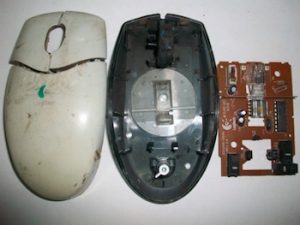 If melting items can help combine different materials, exposing them to ultra-low temperatures can keep them apart. That’s the idea behind a new technique for separating different materials in shredded e-scrap.
If melting items can help combine different materials, exposing them to ultra-low temperatures can keep them apart. That’s the idea behind a new technique for separating different materials in shredded e-scrap.
Researchers at Rice University and the Indian Institute of Science say freezing shredded e-scrap and crushing it to nanodust can simplify the materials-separation process, allowing for improved recovery.
The hope is the method will provide an environmentally friendly replacement to the smelting and leaching techniques used to recover valuable metals and alloys today.
“We take advantage of the physics. When you heat things, they are more likely to combine,” said Chandra Sekhar Tiwary, a researcher on the project, stated in a press release. “But in low temperatures, they don’t like to mix. The materials’ basic properties – their elastic modulus, thermal conductivity and coefficient of thermal expansion – all change. They allow everything to separate really well.”
Researchers sent printed circuit boards from computer mice into a deep-freeze device called a cryo-mill. The equipment contained argon gas and a single steel ball. It used a steady stream of liquid nitrogen to keep the container at minus 182 degrees Fahrenheit.
When shaken, the ball first smashed the polymer element of the boards before hitting the metals and then the oxides. The process took place just long enough to separate the materials into a powder, with particles between 20 and 100 nanometers wide (there are a billion nanometers in a meter).
The crushing process can take up to three hours, after which the particles are bathed in water to separate them.
The process is the subject of a paper in the journal Materials Today. The paper was written by Tiwary and fellow researchers Pulickel Ajayan, Kamanio Chattopadhyay and D.P. Mahapatra.



